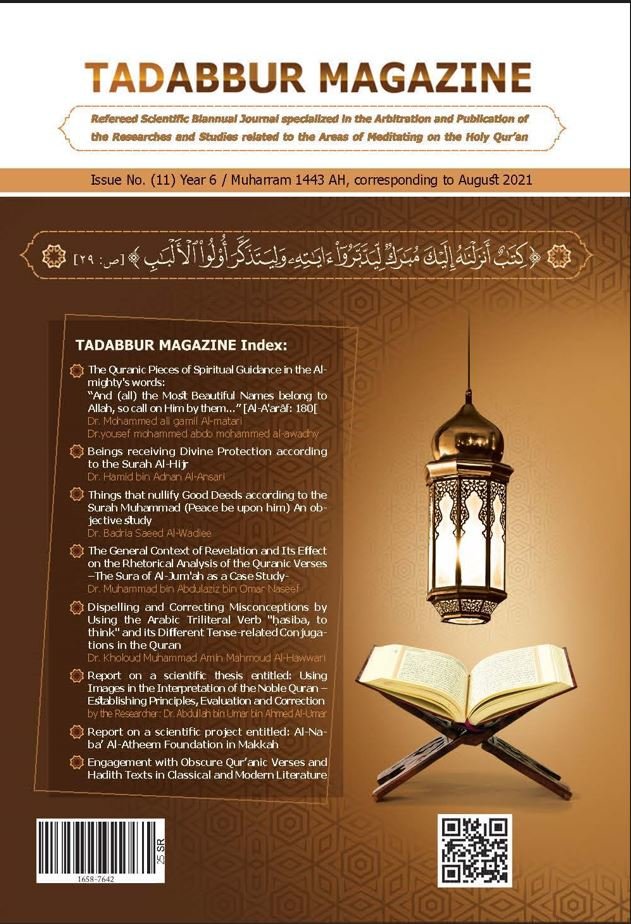Beings receiving Divine Protection according to the Sura of Al-Hijr
Main Article Content
Abstract
Objectives of the research:
The research aims to reflect on the Sura of Al-Hijr through its reference to divine protection and discuss this topic by clarifying the meaning of protection for those whom Allâh, the Almighty, means by quoting relevant material from Islamic law and referring to the views of the exegetes and others who have dealt with this subject within the scope of the meanings of the verses in question.
Methodology of the research:
First, identifying the objectives of the research through presentation and discussion, and using the available references of exegesis and other related literature.
Second, documenting all quotations with little alteration in some cases.
Third, referencing the Quranic verses by mentioning the names of the Suras and their numbers.
Fourth, Attributing hadiths and transmitted accounts mentioned in the research, indicating their levels of authenticity with the help of the opinions of trustworthy scholars of Hadith, in case the hadith or the transmitted account are not quoted from the two Sahihs or either of them.
Fifthly, doing an objective study on the relevant verses while employing the traditional and modern books of exegesis and clarifying the relationship between the Sura and the one preceding it as well as the subjects covered by the Sura in question.
Downloads
Article Details
Conference Proceedings Volume
Section

This work is licensed under a Creative Commons Attribution-NonCommercial 4.0 International License.
Indicating to the intellectual property, copyrights, and open access right:
According to the Budapest Initiative 2002; tadabbur Journal, which is issued by Khibrat Taibah For Research and Studies in Medina, provides free open access to its publications, and applies the Creative Commons license:
Attribution- Non-Commercial 4.0 International (CC BY-NC 4.0) for the works it publishes from peer-reviewed scientific research and reports, which are freely available on the Internet, and which allows any user to read, download, copy, and distribute (Convert), print, search, or create links to the full texts of the journal’s research and publications, and analyze them in an automatic manner for discovering them, sending them as software data, or using them for any other legal purpose, without financial, legal, or other technical barriers beyond those related to Internet access.
It also highlight that the only barrier to reproduction and distribution, and the only role of copyright in this field, is the necessity of granting the authors of the journal’s research and reports and the publisher the journal; Control over their works, and the right to official recognition and reference citations.





